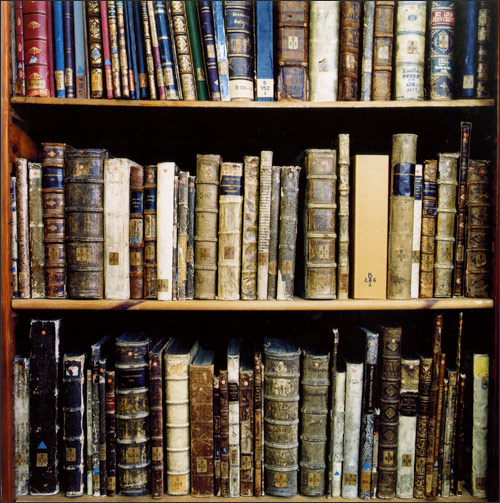The Cross of Silver
Oscar B. Johannsen
[Reprinted from the Henry George News, May,
1965]
"You shall not press down upon the brow of labor this crown of
thorns; you shall not crucify mankind upon a cross of gold." So
roared William Jennings Bryan, in his famous "Cross of Gold"
speech which swept the delegates at the national democratic convention
off their feet in 1896 and awarded him the nomination as candidate for
the presidency of the United States. Today, 69 years later, there is
evidence that our freedom may be crucified on a cross of silver.
The inexorable workings of Gresham's law - bad money displacing good
have precipitated a coin shortage. Bad paper money is pushing gold and
silver out of the country. But silver is not merely flowing abroad, it
is flowing into teapots and safes all over the country. Thousands of
half dollars are going into safe deposit boxes, as owners await the
day when the price of silver will rise above $1.2929. Cart-wheels,
those silver dollars that have been with us since the founding of the
Republic, shattered the aplomb of our treasury officials last year,
for people actually camped overnight at the treasury building in
Washington to be among the first in line to redeem their silver
certificates for these rare coins. And why? Because the price of
silver had risen to the point where it would soon be profitable to
melt the dollars which are composed of 90 per cent silver and 10 per
cent copper. The price at which it has sold formerly has been so low
that the silver content was kept intentionally at much less than the
price specified on the face of the coin. When the price hit 1.2929 the
.77 ounce of silver in a cartwheel was worth $1, and the hoarding
began.
The lines besieging the treasury were so long and objectionable, and
the drain on its supply so great, that in March 1964 the Secretary of
the Treasury drove out the money changers. He could not legally
prevent the redemption of silver certificates, so he directed that
anyone desiring silver would have to get it either at the New York or
San Francisco mint. There they would be given .77 of an ounce of
silver "crystals" sifted into a plain envelope. This halted
the demand since few people wanted silver dust, but the drain was so
great that the treasury has only about $3 million left in silver
dollars, most of them probably from a mint which existed at Carson
City around 1900. These dollars have "special numismatic value."
Until the treasury can issue a new type of subsidiary coinage it
cannot let the price of silver go above $1.2929, for it does not want
the 480 million concealed cartwheels to melted down. To prevent this
it h been selling silver from its stockpile at the rate of 400 million
ounces year. But it has only 1.2 billion ounces left - enough for four
years. It cannot deplete the stockpile for the defense department is
likely to insist on a reserve of about 600 million ounces for possible
military use - this would further reduce the supply by half. Even if
the treasury discontinued the cartwheels it could not let the other
silver denominations wind up in the melting pot. The price at which
their silver content is equal to their face amount is $1.3824, not
quite 10 cents above the present price. Thus something must be done
soon.
Subsidiary coins are tokens that are accepted when the government
stands ready to redeem them at their face amount, but money in the
United States is still based on gold. Before the rise in the price of
silver, a cartwheel could be exchanged for a dollar's worth of goods
because 35 cartwheels represented an ounce of gold. (Presumably the
price of gold is $35 an ounce. The fact that the government prohibits
the ownership of gold, other than in certain forms such as jewelry,
makes the redemption theoretical.)
In order to retire as many silver certificates as possible without
the necessity of redeeming them in silver, the treasury in 1963 had
Congress enact legislation replacing the $1 silver certificates with
$1 Federal Reserve Notes. If you examine a $1 FR Note you will find it
merely states "One Dollar," and that it is legal tender.
Contrast this with a $5 FR Note which is clearly an IOU - but what is
the $1 FR Note? It is pure fiat money and is concrete evidence of the
gradual deterioration of our monetary system.
The treasury study is expected to recommend either the issuance of
silver coins with a silver content so small as to obviate the
likelihood of the price of silver reaching a point where coins would
be melted down, or the substitution of different materials. Copper and
nickel alloys have been suggested; but vending machines, toll
collectors and telephones are geared to silver coins, and conversion
of all such devices would be costly.
This silver crisis is important chiefly because it may trigger loss
of confidence in the dollar. As the government has adopted the
Keynesian policy of creating full employment by piling one deficit on
another, the amount of credit created by this process has been
fantastic. While this has resulted in prices creeping up, as in the
case of silver, they are not nearly as high as they would be if all
the credit was being used. As long as new credit is hoarded no serious
price rise is imminent. However, once people become alarmed over the
purchasing power of their paper dollars, they will spend like mad.
This is a constant worry to the monetary authorities. So fearful are
they that when Congress passed the law repealing the requirements that
demand deposits be backed by gold, they rushed it through with as
little publicity as possible. At the same time they reassured the
public by retaining the gold backing of Federal Reserve Notes. Most
people never see gold coins, and are not aware that the gold backing
of demand deposits has been withdrawn, but the case of silver is quite
different. People handle silver coins every day, testing them
occasionally to make sure they are not counterfeit. They like the feel
and the ring of sound coins.
Most students of George recognize that goods and services are
purchased with other goods and services and money acts primarily as a
medium to facilitate that process. They regard it merely as the oil
which lubricates the economic machine but not as part of the machine
itself. This is not strictly true but true enough to allay their
immediate concern.
Georgists make freedom their first objective, and the solution of the
land problem is the indispensable prerequisite for securing this
freedom. But if their preoccupations lead them to exclude such things
as the question of a proper monetary system, they may find some day
that freedom has been lost along with the vain attempt to solve the
other problem.
If people rush out on a buying spree, the government will respond by
adding one restrictive measure after another, such as price controls
and rationing-in the effort to halt price rises. The silver crisis may
presage loss of freedom for America, not on Bryan's cross of gold, but
on a cross of silver.
|











